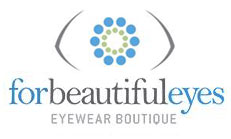
Macular Degeneration, which is also known as Age-related Macular Degeneration (AMD), because it is usually associated with aging, is a leading cause of vision loss in adults aged 50 and older. The disease is characterised by a gradual loss of central vision and can occur in one eye or both eyes simultaneously.
Understanding AMD
Macular Degeneration is a disease that damages the macula, which is the center of the retina responsible for sharp visual acuity in the central field of vision. The breakdown of the macula eventually results in the loss of central vision and the ability to see fine details. While AMD doesn’t result in complete blindness, the quality of vision is severely compromised leading to what we refer to as “low vision”.
The loss of central vision can interfere with the performance of everyday tasks such as driving, reading, writing, cooking, or even recognising faces of friends and family. The good news is, there are many low vision aides on the market now that can assist in helping you to perform these tasks.
Wet and Dry AMD
There are two types of AMD, wet and dry.
Dry AMD is the most common form of the disease. It is characterised by blurred central vision or blind spots, as the macula begins to deteriorate. Dry AMD is less severe than the wet form, but can progress to wet AMD rapidly.
Wet AMD is when abnormal blood vessels begin to grow under the retina and leak fluid and blood into the macula, causing distortions in vision. Wet AMD can cause permanent scarring if not treated quickly, so any sudden blur in vision should be assessed immediately, especially if one is aware that they have AMD.
Are You at Risk?
Awareness about the disease, the risk factors and prevention are critical, even for younger generations because taking care of your eyes while you are young will help to reduce the risks later on in life.
The biggest risk factor for AMD is age. Individuals over 60 are most likely to develop the disease however it can occur earlier. Additional risk factors include:
- Smoking: According to research smoking can double the risk of AMD.
- Genetics and Family History: If AMD runs in your family you are at a higher risk. Scientists have also identified a number of particular genes that are associated with the disease.
- Lifestyle: Obesity, high cholesterol or blood pressure, poor nutrition and inactivity all contribute to the likelihood of getting AMD.
Preventing of AMD
If you have risk factors, here is what you can do to prevent or slow the progression of AMD:
- Regular eye tests: once a year especially if you are 50 or over.
- Stop smoking:
- Know your family history: inform your optometrist.
- Proper nutrition and regular exercise: research indicates that a healthy diet rich in “Eye foods” with key nutrients for the eyes such as fish high in omega 3s, green leafy vegetables, such as kale and spinach, as well as regular exercise may reduce your risks or slow the progression of AMD.
- Maintain good health: including cholesterol levels, blood sugar and blood pressure.
- Dietary supplements: Studies by the National Eye Institute called AREDs and ARED2 indicated that a high dosage of certain supplements, such as vitamin C, vitamin E and lutein may slow the progression of advanced dry AMD. Speak to your optometrist before taking these supplements as there may be associated risks involved.
- UV protection: wear 99% -100% UV-blocking sunglasses.
The first step to eye health is awareness
By knowing your risk, taking preventative measures and visiting your optometrist on a regular basis, you can greatly reduce your chances of facing this sight-threatening eye disease.
